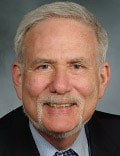The US Food and Drug Administration approvals of dupilumab (Dupixent, Regeneron/Sanofi) for adults and children with eosinophilic esophagitis (EoE) affirmed the safety and efficacy of the drug, which is the first product indicated specifically for treatment of this disease.
The recent expanded approval for its use in kids aged 1 year and older imply that clinicians can prescribe it for just about any patient with the immune disorder.
But is dupilumab right for everyone?
What the Trials Said
Dupilumab, given by injection, is a recombinant human immunoglobulin-G4 monoclonal antibody that inhibits interleukin 4 (IL-4) and IL-13 signaling.
The first approval for EoE, on May 22, 2022, for adults and children aged 12 years and older weighing at least 40 kg, was based on data from 321 participants in the first two parts of a three-part phase 3 trial involving patients with EoE despite 8 weeks of high-dose proton pump inhibitor (PPI) therapy and with substantial symptom burden.
At 24 weeks, histologic remission occurred in 60% of patients in Part A of the trial and 59% in Part B who received a weekly 300-mg dose of dupilumab compared with 5% and 6% taking placebo. Additionally, Part A and B participants taking the drug weekly experienced a 69% and 64% reduction in disease symptoms, respectively, vs 32% and 41% for placebo. The drug also outperformed placebo in reducing patients’ esophageal eosinophilic counts and abnormal endoscopic findings.
The second approval, on January 25, 2024, for children aged 1 year and older weighing at least 15 kg, was based on data from a two-part, placebo-controlled trial involving 102 children, ages 1-11 years, with EoE. The study involved a 16-week treatment period and a 36-week extended period during which eligible children from the dupilumab group continued to receive their weight-based dose level and those who were on placebo switched to active treatment. The trial showed that a greater proportion of children taking the drug achieved histological remission.
A Major Advance but Temper Expectations
Dupilumab is a “major advance for EoE that has to find its place but should be looked at with optimism and what I call tempered expectations,” Philip Katz, MD, professor of medicine in the gastroenterology division at Weill Cornell Medicine, New York City, told Medscape Medical News. “I’ve been using it since The New England Journal of Medicine paper was published about a year and a half ago, and as a slow adopter, I like it.”
 Philip Katz, MD
Philip Katz, MD
Katz and his colleagues have been prescribing dupilumab mainly for patients who haven’t responded to other medications, mainly PPIs and steroids.
“We start people on it without stopping anything else,” Katz said. “Then, as symptoms evolve and people have a positive response, we stop the other medications. For example, in one patient who did very well on the drug, we stopped his steroids and now, we’re weaning him off his PPI. It’s a process. This is not a disease where you can rush people.”
The tempered approach is in part because of payer issues, he noted.
“It’s very difficult to get it reimbursed in the US if you haven’t tried something else first,” Katz said. “And because it’s still relatively new in this field, standard treatment is still used frequently.”
Although Katz has had “incredible success” with dupilumab so far, “nothing should be considered a miracle drug,” he said. “A couple of people have had injection reactions, and one person couldn’t tolerate the drug. So, while it seems to have an excellent response rate, it’s not 100%. Like any new drug, it will have to find its true success rate.”
Taking a Step-Up Approach
Like Katz, Evan Dellon, MD, MPH, director of the Center for Esophageal Diseases and Swallowing at the University of North Carolina at Chapel Hill, North Carolina, is enthusiastic about dupilumab.
 Evan Dellon, MD
Evan Dellon, MD
“It’s a boon to the field, and now, some real-world data are coming out and looking very much like the clinical trial data, which are reassuring,” said Dellon, a coauthor of The New England Journal of Medicine paper.
It’s been a “game changer,” particularly for people who weren’t doing well with their current treatments, he told Medscape Medical News. “In my practice, I’ve been seeing a lowish response rate for PPIs, and about 30%-40% not responding to topical steroids, since we don’t have a standard formulation for that. The diet elimination therapy is effective if people can do it well and adhere to it. But there’s a group of people who don’t respond, and probably, a larger group who can’t really do that treatment long term. So, the drug has been fantastic for those patients.”
Although the drug is approved for patients aged 1 year and older with no caveats, “it’s not the right medicine for every patient,” he said. “Patients in the clinical trials had EoE for 5 years, many of them were treatment refractory, and just under half had dilations and strictures,” he said. “They represent a certain group of patients.”
Dellon is taking a “step-up approach” to EoE treatment, first trying the standard interventions — PPIs, steroids, and an elimination diet — that many patients do respond to.
For new patients who choose medication therapy, he prescribes PPIs and then topical steroids and then steps up to dupilumab for patients who aren’t responding or who have a strong preference for starting the drug early.
In addition to EoE, the drug is approved for certain patients with atopic dermatitis, asthma, and chronic rhinosinusitis with nasal polyposis. As such, Dellon said that he will try dupilumab early on in patients with multiple atopic conditions, such as asthma, eczema, or nasal disease.
“Even if their EoE is not that severe, those patients can still benefit from a more streamlined systemic therapy,” he said.
Challenges and Questions Still Remain
Not surprisingly, both Katz and Dellon pointed to dupilumab’s cost and the related challenge of convincing insurance companies to cover the drug as major challenges to more widespread use. The lack of long-term data also poses a challenge.
Side effects, which often stand in the way of the use of a new drug, are not an issue, for the most part, at least in the short term, according to Dellon. The most common side effects are discomfort, redness at the injection site, and pain related to the injection.
“Keeping the medication out of the refrigerator for a bit to bring it up to room temperature can help, as can doing the injection in the lower abdomen,” he said. “Otherwise, it’s well tolerated, with no side effects that are unique to EoE.”
Data from the third part of the clinical trial, which followed patients from weeks 24-52 of treatment, indicated that improvements in histological, symptomatic, endoscopic, and molecular features of EoE among patients taking weekly dupilumab continued or improved.
In my practice, “my observations have been that people are maintaining their responses,” said Dellon, a coauthor of the paper on the study’s third part.
However, one critical question is whether the dose intensity and/or frequency can be decreased over time without reducing the response rate.
“Hopefully, we’ll start getting data on that in the next year or two,” Dellon said. “It’s hard to do that yet because the drug has only been out for a year or year and a half, and people are just getting to that year of the initial dosing.”
Another question is how to use the drug in people who are different from the clinical trial population, such as those who have been responding to other therapies but want to switch, and people who are newly diagnosed but who have severe disease. Can the drug be used earlier in these populations?
Dellon would like to see a study that utilizes the new EoE index of severity metric to focus specifically on dupilumab use in patients with severe disease.
Early findings from his recent real-world study of 46 patients with severe disease who would not have qualified for the clinical trials found histologic, endoscopic, and symptom improvement in 91% of patients with refractory and fibrostenotic EoE after 6 months of dupilumab treatment.
While women tend to be well represented in the clinical trial, the drug needs to be tested in a more diverse population, Dellon noted. Research is underway looking at dupilumab effectiveness in people with different race/ethnicities.
EoE is more common among White people but that may be the result of a “detection issue,” he said. “When clinicians see a Black or Hispanic patient with dysphagia, for example, they may not be thinking of EoE. And there are also some data suggesting that EoE presents slightly differently in non-White populations, which again could decrease the suspicion for it. This is an area we need to learn more about.”
Don’t ‘Abandon’ Current Interventions
“We’ve got an exciting drug that is going to help a lot of people with a complex disease,” Katz said. “But we should not forget that there are other interventions that have been successful, and quite frankly, they don’t need to be abandoned.”
“Learn about the drug if you’ve never used it,” he advised. “Read the studies so you understand who the patients were as a baseline for where you’re going to use it. Be prepared to do the appropriate paperwork requirements to get approvals from insurers. And look for more literature because it’s coming.”
“Overall, dupilumab has really changed care in people with moderate to severe disease who are not responding or are intolerant to the other treatments,” Dellon said. “That’s the natural place for the medication to go at this point.”
Katz is a consultant to Phathom Pharma, Sebela Pharma, Medpace (not active), and Medtronic.
Dellon received research funding from Adare/Ellodi, Allakos, Arena/Pfizer, AstraZeneca, Eupraxia, Ferring, GSK, Meritage, Miraca, Nutricia, Celgene/Receptos/BMS, Regeneron, Revolo, and Shire/Takeda. He served as a consultant to Abbott, AbbVie, Adare/Ellodi, Aimmune, Akesobio, Alfasigma, ALK, Allakos, Amgen, Aqilion, Arena/Pfizer, Aslan, AstraZeneca, Avir, Biorasi, Calypso, Celgene/Receptos/BMS, Celldex, Eli Lilly, EsoCap, Eupraxia, Dr. Falk Pharma, Ferring, GSK, Gossamer Bio, Holoclara, Invea, Knightpoint, Landos, LucidDx, Morphic, Nexstone Immunology/Uniquity, Nutricia, Parexel/Calyx, Phathom, Regeneron, Revolo, Robarts/Alimentiv, Salix, Sanofi, Shire/Takeda, Target RWE, and Upstream Bio. He also received educational grants from Allakos, Aqilion, Holoclara, and Invea.
>>> Read full article>>>
Copyright for syndicated content belongs to the linked Source : Medscape – https://www.medscape.com/viewarticle/dupilumab-eosinophilic-esophagitis-how-it-improving-2024a10003gs
















![[News] Japan Develops 10nm Nanoimprint Technology, with Potential to Tackle EUV Bottleneck – TrendForce](https://earth-news.info/wp-content/uploads/2025/12/329851-news-japan-develops-10nm-nanoimprint-technology-with-potential-to-tackle-euv-bottleneck-trendforce-360x180.jpg)














